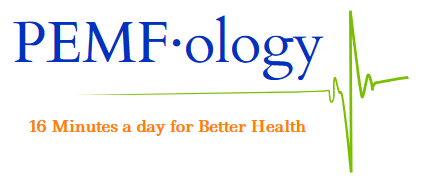Pemf Therapy for Anxiety and Depression
PEMF therapy can be used for taking better care of your brain to help fight anxiety, depression, brain fog, and other conditions that are now common in modern life.
Research and reviews on PEMF therapy for brain-health shows it’s effectiveness as a mood booster and treating major depressive disorders. Pulsed Electromagnetic Field (PEMF) technology has proven anti-depression and anti-anxiety effects which are more natural and effective than antidepressants. The FDA has approved the use of PEMF therapy for treating mental depression and anxiety in US and Canada, and its also widely accepted in the Europe and EU.
By enhancing cellular respiration and nutrient intake, PEMF therapy balances hormonal functions including serotonin (which helps you feel calm, serene, optimistic and self-confident), dopamine (responsible for making you feel excited, motivated, and energized) and the stress hormone, cortisol (which revs you up into a high gear when you need it).
PEMF therapy has anti-inflammatory effects on the brain tissues too just like any other part of the body. Brain inflammation can also be responsible for brain fog or decline in cognitive function, depression, stress and anxiety. Research suggests that you can reverse these trends and take charge of your brain health in as little as two weeks if you give your brain the frequencies it needs to recharge itself to operate effectively. Research shows our brains start to noticeably slow by the time we reach 40, and up to 17 per cent of people over 65 will end up with some form of mild cognitive impairment.
New research suggests that brain fog – that huge grey area between normal functioning and the dreaded dementia or Alzheimer’s disease – may, in fact, be reversible with PEMF therapy.
1.McGirr A, Van den, Tovar-Perdomo S, Fleck M, Berlim M. Effectiveness and acceptability of accelerated repetitive transcranial magnetic stimulation (rTMS) for treatment-resistant major depressive disorder: an open label trial. J Affect Disord. 2015;173:216-220. [PubMed]2.Bech P, Gefke M, Lunde M, Lauritzen L, Martiny K. The Pharmacopsychometric Triangle to Illustrate the Effectiveness of T-PEMF Concomitant with Antidepressants in Treatment Resistant Patients: A Double-Blind, Randomised, Sham-Controlled Trial Revisited with Focus on the Patient-Reported Outcomes. Depress Res Treat. 2011;2011:806298. [PMC]3.Rikk J, Finn K, Liziczai I, Radák Z, Bori Z, Ihász F. Influence of pulsing electromagnetic field therapy on resting blood pressure in aging adults. Electromagn Biol Med. 2013;32(2):165-172. [PubMed]4.Udupa K, Sathyaprabha T, Thirthalli J, Kishore K, Raju T, Gangadhar B. Modulation of cardiac autonomic functions in patients with major depression treated with repetitive transcranial magnetic stimulation. J Affect Disord. 2007;104(1-3):231-236. [PubMed]5.Claustrat B, Chazot G, Brun J, Jordan D, Sassolas G. A chronobiological study of melatonin and cortisol secretion in depressed subjects: plasma melatonin, a biochemical marker in major depression. Biol Psychiatry. 1984;19(8):1215-1228. [PubMed]6.Janicak P, Nahas Z, Lisanby S, et al. Durability of clinical benefit with transcranial magnetic stimulation (TMS) in the treatment of pharmacoresistant major depression: assessment of relapse during a 6-month, multisite, open-label study. Brain Stimul. 2010;3(4):187-199. [PubMed]
